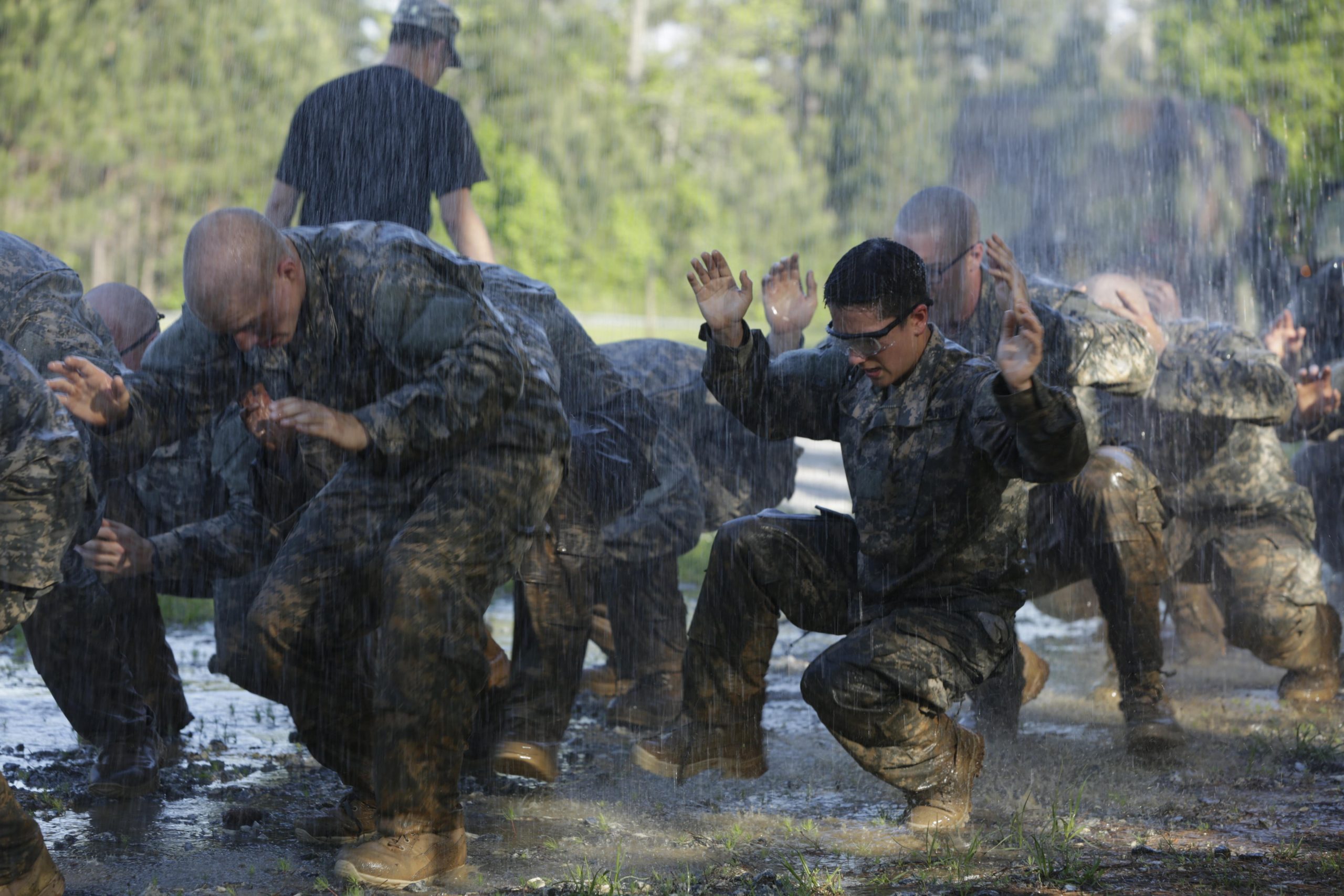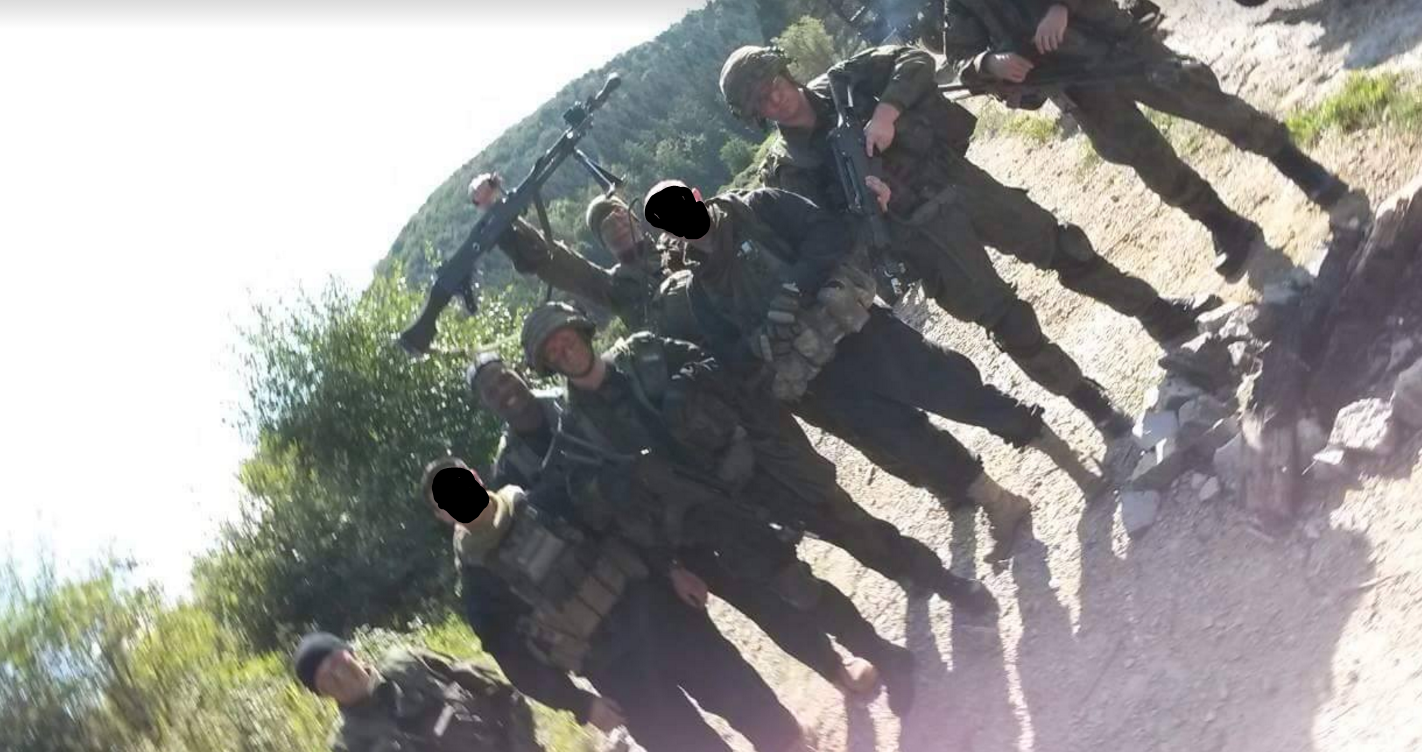Military Fitness: The Training Mentality
Almost every single person who is halfway strong can tell you the difference between exercise and training; however, this article isn’t aimed at them, it’s aimed at your sorry ass. Yes, you. The new trainee who walks into the gym and does a whole bunch of stuff (often stupid, weird “functional strength movements” you see on highlight reels of actual athletes), then leaves with a feeling of accomplishment because you worked out today. Maybe you even use this as justification to go get a scoop of Ben & Jerry’s ice cream (just one though). All jokes aside, it’s very important to understand the fundamental difference between exercising and training, especially for those serving in the armed forces.
Mark Rippetoe, the author of Starting Strength: Basic Barbell Training, defines both exercise and training as such:
Exercise is physical activity for its own sake, a workout done for the effect it produces today, during the workout or right after you’re through. Training is physical activity done with a longer-term goal in mind, the constituent workouts of which are specifically designed to produce that goal. If a program of physical activity is not designed to get you stronger or faster or better conditioned by producing a specific stress to which a specific desirable adaptation can occur, you don’t get to call it training.

The man knows what he’s talking about.
If you want to read more about the specifics of training vs exercise, then I suggest you read the full article. For the purpose of this piece, we’ll be discussing why this is important for members of the armed forces.
The Importance of Training in the Armed Forces
When I talk about how training is important to the armed forces, it’s not just the notion that “soldiers have to be physically fit”, this much should be obvious. Rather, the emphasis on training should be prioritized because of the mindset it produces. For the purposes of this article, we’ll refer to this mindset as: the “training mentality”. The training mentality pushes soldiers away from sacrificing long term progress, for short term gains. We want soldiers to think in regards to the long-term sustainability of their training, and how that will affect the ability to do their job. However, in order for soldiers to become effective thinking long term, they must be able to honestly assess both themselves, and their thought process, then identify what needs improvement. In the education field, we call this “metacognition”.

This is what metacognition looks like. You know what this is from…
For example: we can all agree that a stronger soldier is a better soldier. A soldier, who is worth their pay and has the training mentality, would ask the question “What would make me a better soldier?” Most would come to the realization that they need to become “more fit” (which often includes getting stronger, so we’ll use that as the goal), and so they set out on their quest. They would ask important questions, such as:
- What can I do to get stronger?
- Is lifting weights, or doing calisthenics better for getting stronger?
- Which are the best movements I can train to get stronger?
- How will I get stronger at these movements?
- How will I ensure that I keep getting stronger in these movements?
- What would stunt my progress that I need to avoid?
- What metrics can I set to keep myself accountable for my progress?
- Can I quantify, and record my progress?
- Can I then make a plan for the future, what milestones I should hit, and when?
Seems complicated, right? Well it isn’t. Much of thinking in the long term can be boiled down to: what’s my goal, and what must I do to get there? Oftentimes, complexity is the privilege of people who are further along this process. However, as anybody who is strong, a good shooter, runs a business, etc. will tell you that “simple” doesn’t mean “not difficult”. The process of getting your bench press up to 315 is a simple one (just keep increasing the weight both on the bar and yourself), but that process isn’t easy. When you make a plan to hit a personal record, you know it’s going to be difficult, and you won’t always want to keep going, but you also know that it’s going to help you reach your goal, so you get it done anyway. This produces something that people know is incredibly important, mental toughness.
We all know about how important mental toughness is to those serving in the armed forces, but to those of us with the “training mentality”, it’s a side-effect. In fact, the majority of you probably thought of mental toughness when you read the title of this article. While mental toughness is essential for success in the armed forces, it is crucial to teach soldiers to think in the long term first, with toughness coming as a result. If you want an example of why this is important, just look at all those who served in the armed forces, and went broke only a few years later. These people were taught mental toughness, but not how to plan and think in the long term, which would’ve made them tough anyway.
In Conclusion
The training mentality is incredibly important for those serving in the Military, both to create better soldiers during their time served, as well as to make better people after they leave. But it’s also important for everybody else, not just for those of you in, or planning to join the armed forces. Physical training for a goal puts you in the mindset of how to be successful, whether you know it or not. Learn how to plan to reach your goals, how to constantly assess your progress, and fix what isn’t working. This will get you far in life.
Footnotes, References, and Recommended Readings
Some of the academics in the audience might have had my term, “training mentality”, remind them of the phrase, “begin with the end in mind”, which is one of the key points in Stephen R. Covey’s book, The 7 Habits of Highly Effective People. This book was part of the inspiration for this article, and I highly recommend you read it.
As is becoming a recurring theme in my articles, resources by Mark Rippetoe are an important part of the research portion of this article. I encourage you to read these, which include: the article, “Training vs Exercise“, Starting Strength: Basic Barbell Training, and Practical Programming for Strength Training.
Finally, The Art of Manliness posted an article “Get 1% Better Every Day: The Kaizen Way to Self-Improvement“, which helped to inspire this article. I highly recommend you read that too, as it dives into pushing yourself, just a little bit every day, in manageable amounts, in order to drive long term progress towards your goals.





